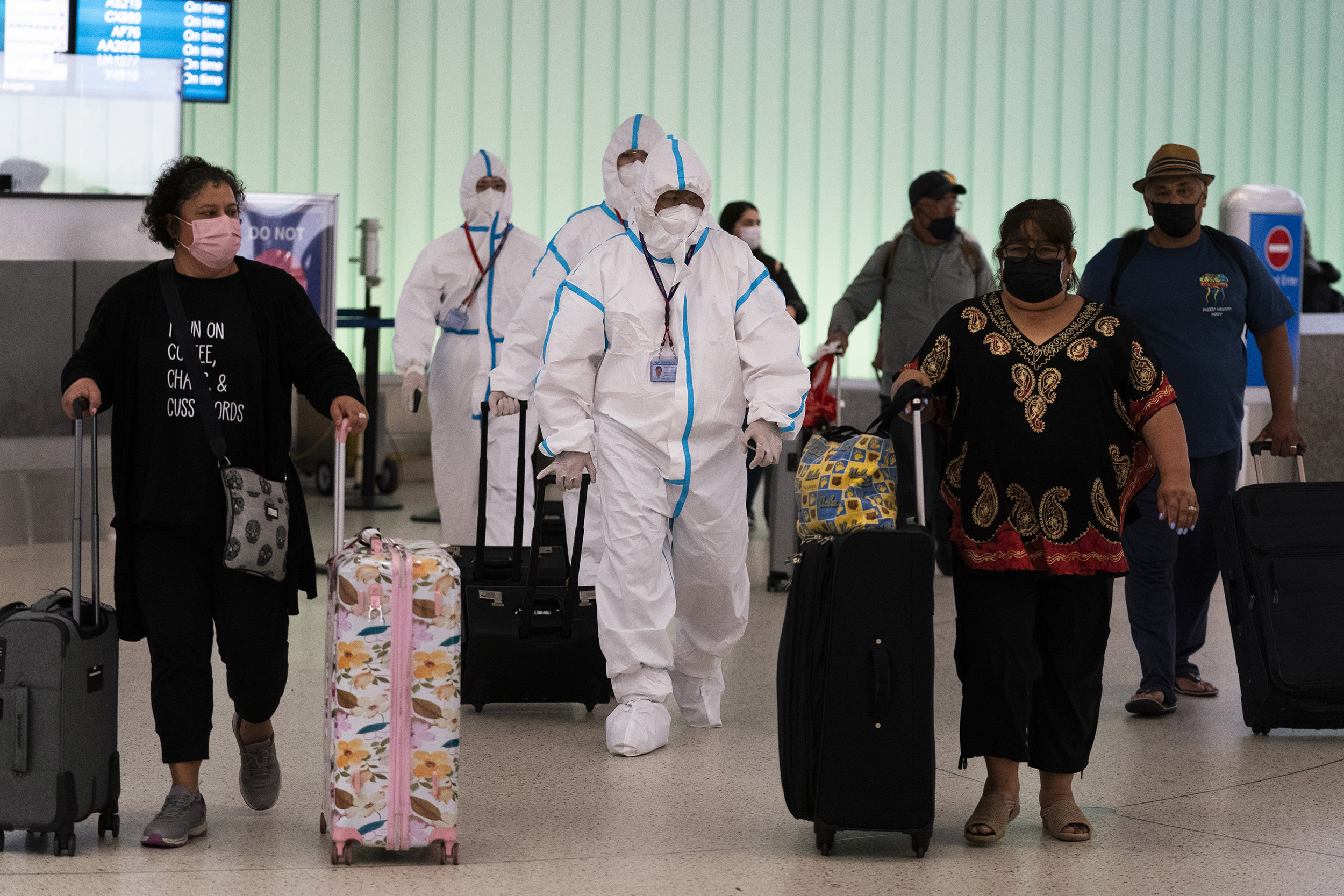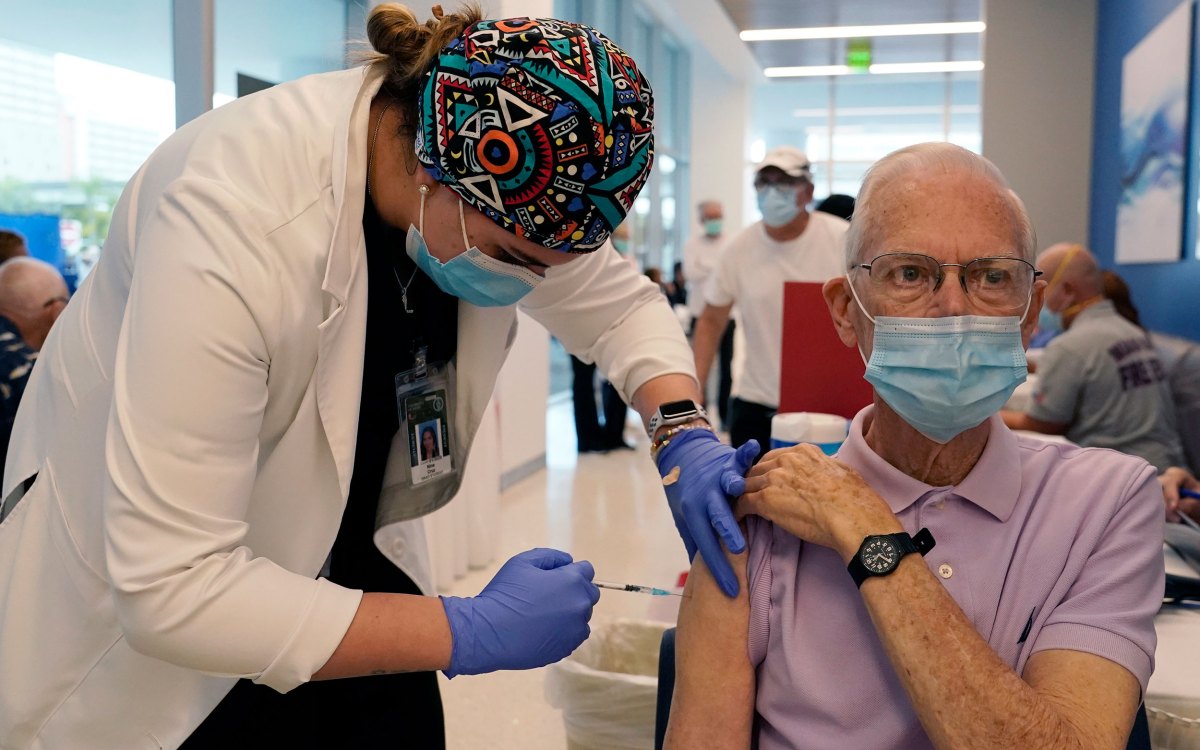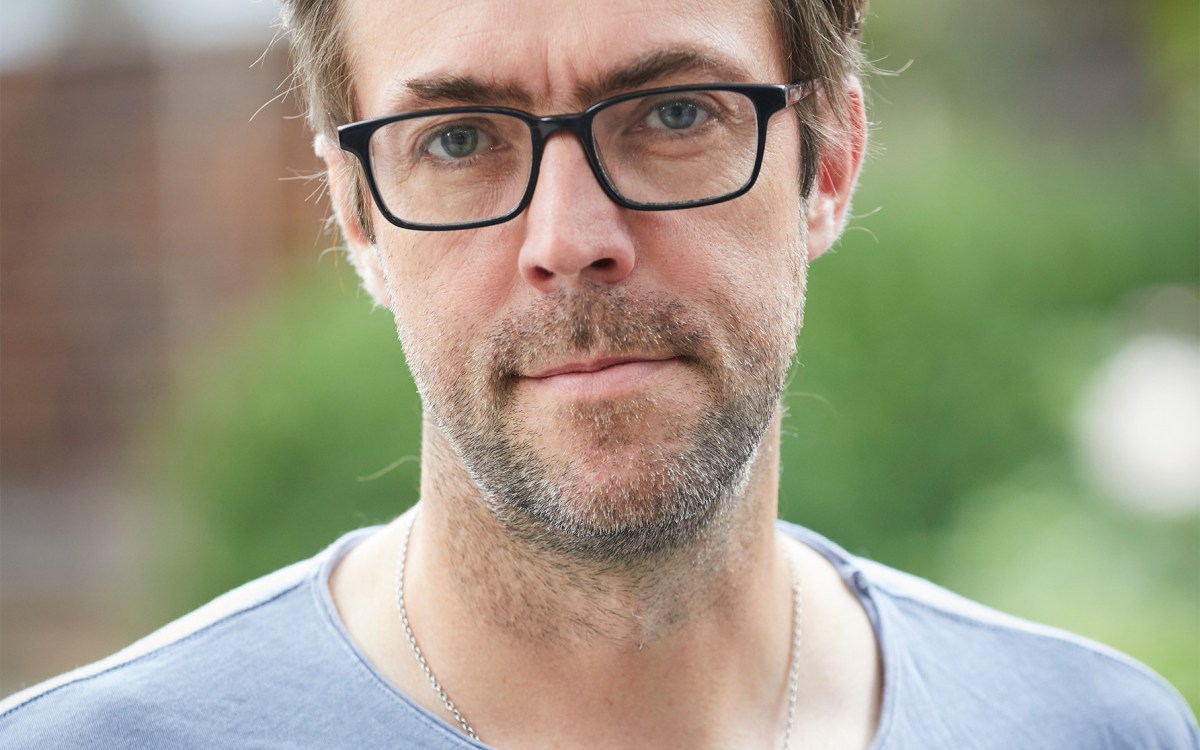
Flight crew members in hazmat suits walk through Los Angeles International Airport as the circle of countries reporting Omicron cases widens.
AP Photo/Jae C. Hong
Scientists race to define Omicron threat, worried about ‘surge upon a surge’
Early findings on transmissibility and immune escape, combined with danger posed by Delta, add urgency to calls for vaccination, testing, other safety measures
Harvard experts warn of a “surge upon a surge” in COVID-19 infections in the coming weeks, as cases involving the Omicron variant pile onto the nationwide illness and death the Delta strain has left in its wake in recent months.
“It comes at such a bad time in terms of the outbreak in front of us, which is truly a resurgent Delta outbreak that is reaching new heights in terms of cases and with hospitalizations and deaths also rising,” said Jacob Lemieux, an infectious diseases doctor at Massachusetts General Hospital and instructor in medicine at Harvard Medical School. “What we’re looking at is a surge upon a surge during a holiday period where there’s going to be a lot of gathering, and now with what is likely a more transmissible virus and a virus that — we now are beginning to see the data — has significant degrees of immune escape.”
Lemieux spoke at a media briefing by the Massachusetts Consortium on Pathogen Readiness on Tuesday. His assessment was echoed by other specialists.
“We’re ready to be done with this, but we’re not done yet,” said Karen Jacobson, an infectious disease physician at Boston Medical Center and a member of the consortium.
The experts spoke as area hospitals filled up with patients who deferred care for a variety of illnesses during last winter’s COVID surge.
“We are facing another difficult winter,” Jacobson said. “We know that a number of the people getting infected today will get ill and be getting into the hospital.”
Cases of COVID-19 have been rising since mid-October, when the late-summer surge across the South subsided and the U.S. Center for Disease Control’s seven-day average of daily cases hit a low of 64,000. By Tuesday, that figure had almost doubled, reaching 117,000 patients. Also on Tuesday, daily deaths jumped to 1,027 from 726 in late November, a 41 percent increase in just over a week.
In the Boston area, levels of coronavirus found in wastewater, which provide an indicator of what may lie ahead, have hit a new high. Meanwhile, governors in New Hampshire, Maine, and New York have called out the National Guard to help hospitals handle the strain of COVID cases. The worrying signs come as public health officials brace for the impact of Omicron, which exploded across South Africa last month before spreading internationally. The variant, first detected in the U.S. on Dec. 2, has reached 19 states and 50 countries.
“We are facing another difficult winter.”
Karen Jacobson, infectious disease physician at Boston Medical Center
In a Harvard T.H. Chan School of Public Health call, Stephen Kissler, a fellow in the Department of Immunology and Infectious Diseases, said that he expects Omicron to overtake Delta as the dominant strain in the U.S. in six to eight weeks. Answers to two important questions about the variant are coming into focus, he added. First, Omicron appears to be more transmissible — potentially much more transmissible — than Delta. Second, it seems to evade at least some immunity, whether natural or vaccine-derived, meaning a likely rise in breakthrough infections. One crucial remaining question — whether it causes more severe illness — may take another week or more to answer because severe illness and death from coronavirus tend to lag reports of infection.
CDC officials say that the initial 43 U.S. Omicron cases appear mild, following on reports from South Africa that patients were younger and not alarmingly sick. Kissler and the other experts cautioned against reading too much into those reports. Many of South Africa’s young patients, Kissler said, were tested only because they were at the hospital for non-COVID conditions and so aren’t an accurate gauge of cases. Also, more broadly, South Africa’s population is younger than that of the U.S., and young people have experienced milder symptoms since the beginning of the pandemic.
Patients in an older population face the prospect of more severe illness. But the U.S., with more than 200 million full vaccinations, has higher rates of protection than South Africa, which should provide at least some defense against the new variant. (Pfizer and BioNTech recently offered good news on this front, saying that a third dose of their mRNA vaccine appears to protect against Omicron.)
The rise of the new variant shouldn’t overshadow progress against the pandemic in recent weeks, the experts said. COVID pills now being evaluated by regulators attack mechanisms in the virus’ life cycle that don’t appear to have mutated in Omicron. Vaccines have been a game changer, and are widely available, at least in the U.S., for those seeking vaccination, or a booster, ahead of holiday parties. The availability of rapid at-home tests is another boon, they said, urging people to test before gathering with friends and family.
“We need to really be thinking about mitigation as we had before,” Jacobson said. “Not locking down, but when we gather — and I think we still can gather in ways that we didn’t last year — to test before we see others, so we know we’re not carrying one of these minimally symptomatic or asymptomatic cases. And when we don’t have an opportunity to test, we try to stay in well-ventilated and masked settings.”








